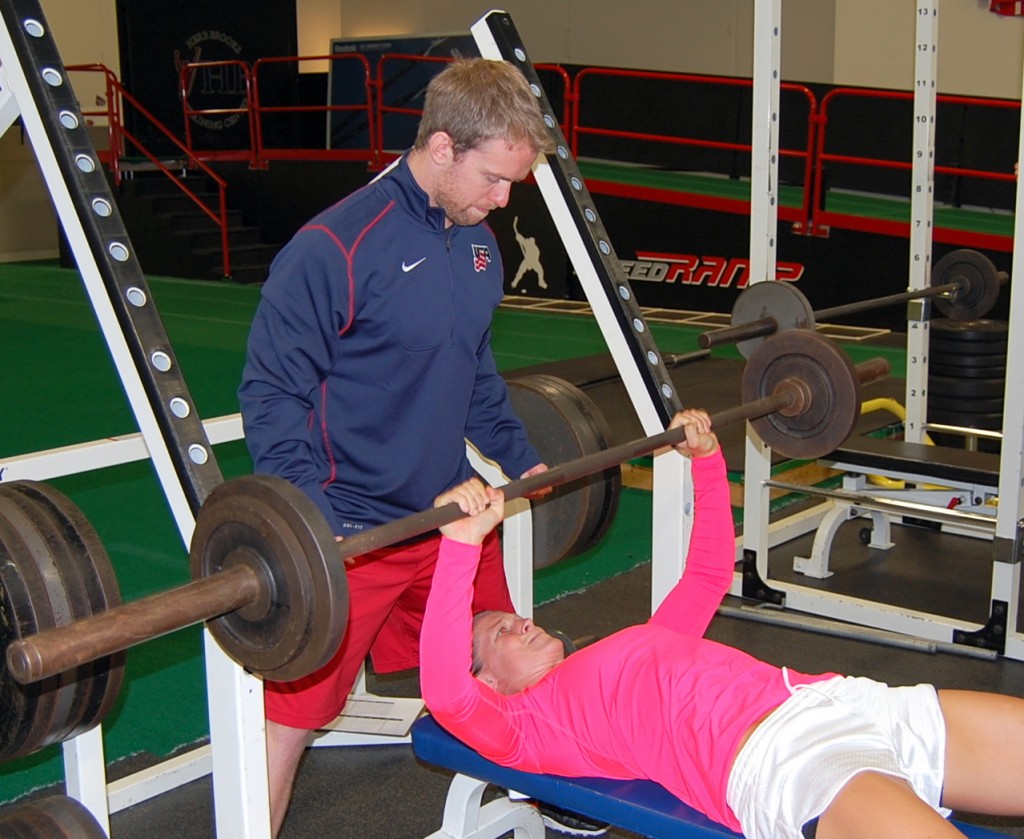Before I get into today’s article, I want to remind you that Alwyn Cosgrove is hosting a free seminar titled “The Death of Personal Training” on Monday. When it comes to the business aspect of fitness and running a training facility, Cosgrove is the man. If you haven’t already, go ahead and register for it here: The Death of Personal Training
It’s been a while since I’ve been able to write a Hockey Strength and Conditioning update. Last Wednesday I flew out to Blaine, Minnesota for a few days to help out with the training/testing of the U-18 and O-18 girls at the U.S. Women’s National Development Program camp. It was great spending a few days working alongside Coach Boyle, Anthony Donskov, Chris Pietrzak-Wegner, Dawn Strout, Cal Dietz and Jim Snider. Awesome group of coaches. I flew back Friday and spent the weekend catching up on everything. I’m actually flying up to Maine later today to go to a PRI course with Eric Cressey. Busy time of year!

Chris Pietrzak-Wegner wrote a great article on selecting a quality protein/energy bar. Chris pointed out a lot of the lesser known downfalls of these products and identified specific ingredients to look out for. He also identifies what things you should look for in a quality bar. I know a lot of players tend to lean on these as a post-practice/game meal resource because of how quick/convenient they are. If you fall into this category, I encourage you to read through this article. Parents and coaches need to continue making an educational push away from processed foods and to foods with more natural ingredients (and usually less total ingredients). The things Chris covers in this article can really be applied to all foods, not just protein bars. Check out the article at the link below.
Click here to read >> Choosing a Protein/Energy Bar Wisely from Chris Pietrzak-Wegner
Darryl Nelson added one of my favorite articles to date. If you don’t know this already, I STRONGLY believe that the idea of “natural ability” or “talent” is GROSSLY over-exaggerated. If you buy into the 10,000 hour rule, I think that, in general, we fail to fully recognize the less obvious factors or forms of practice that create natural ability. For example, the benefits of mental rehearsal are fairly well-established. In other words, visualizing yourself performing a certain skill or movement will result in improvements in that skill or movement. Mental practice is practice. It counts. I think some players are more proactive in this visualization process. On a related note, I think certain players watch hockey games analytically, and apply what they see into their mental rehearsal repertoire so they’re better prepared when they encounter similar situations in their own games. They react more instinctively. It’s practice and it’s highly beneficial, but it’s rarely taught or promoted.
Another less obvious factor contributing to a player’s development is known as the “Relative Age Effect”, which identifies how a player’s birthday may influence their ability to develop in our current system. This was the focus of Darryl’s article, and another thing that everyone from players to administrators in youth hockey should be aware of.
Click here to read >> Relative Age Effect from Darryl Nelson
Sean Skahan added the final phase (Phase 5) of his ACL Rehab/Reconditioning program. Now that he’s posted the last phase, I recommend going back through the site and finding all 5 phases, laying them out, and studying the progression. Individual programs hold limited value (not NO value, just limited), but progressions can give you a ton of insight into the rationale behind the reconditioning strategy. This understanding is what will ultimately give you the ability to apply a similar rationale in your own setting.
Click here for the program >> ACL Rehab/Reconditioning Phase 5 from Sean Skahan
There are some good discussions going on the forum too. My friend Cristi Landrigan asked a specific question about a very popular protein powder that her son was taking and Chris chimed in with some great alternative options. Potenza also started a thread on ways to load someone on the ice other than sleds. A few great ideas there too.
As always, if you aren’t a member yet, I encourage you to try out Hockey Strength and Conditioning for a week. It’ll only cost $1, and if it’s not the best buck you’ve ever spent, I’ll personally refund you!
To your continued success,
Kevin Neeld


